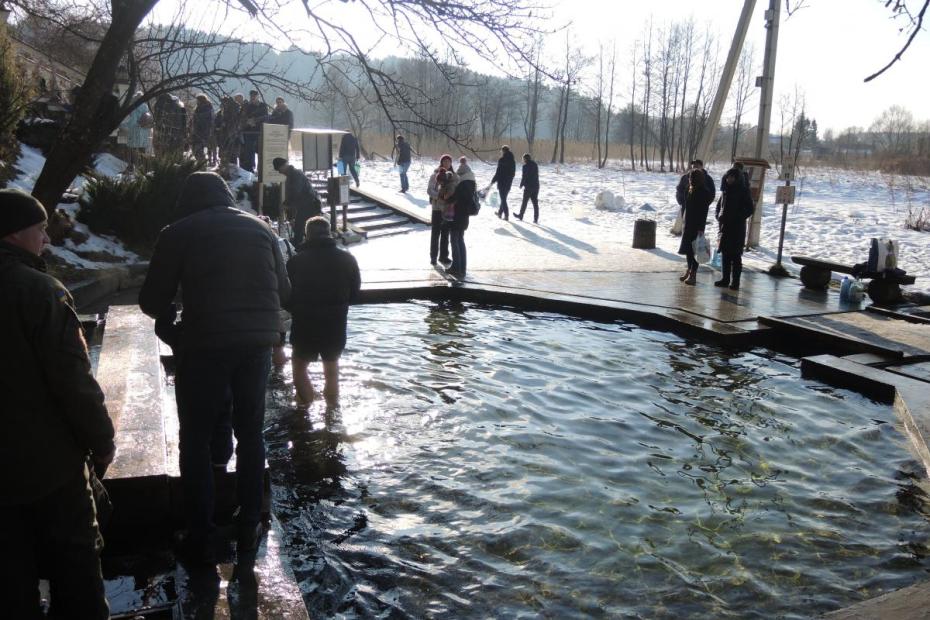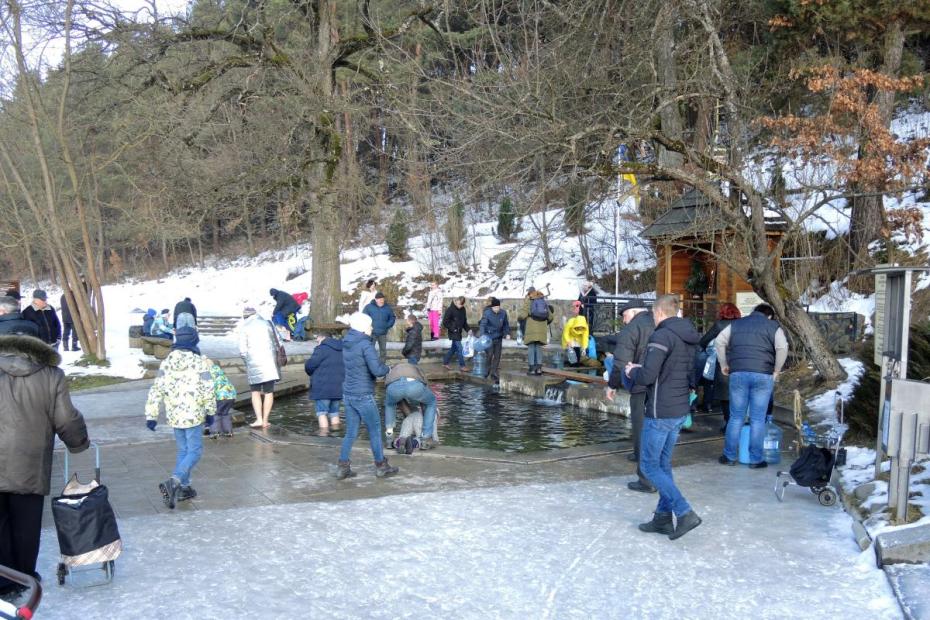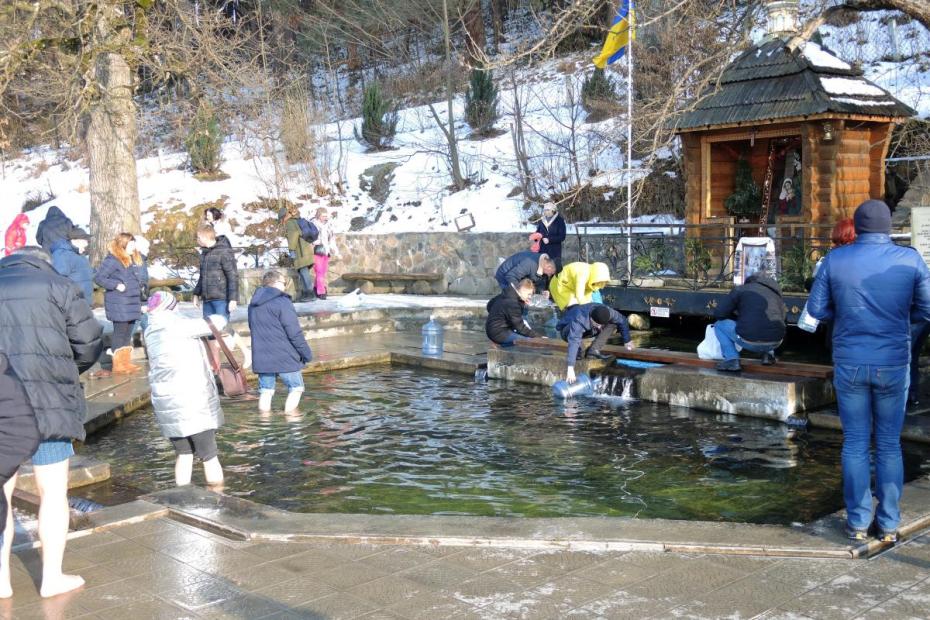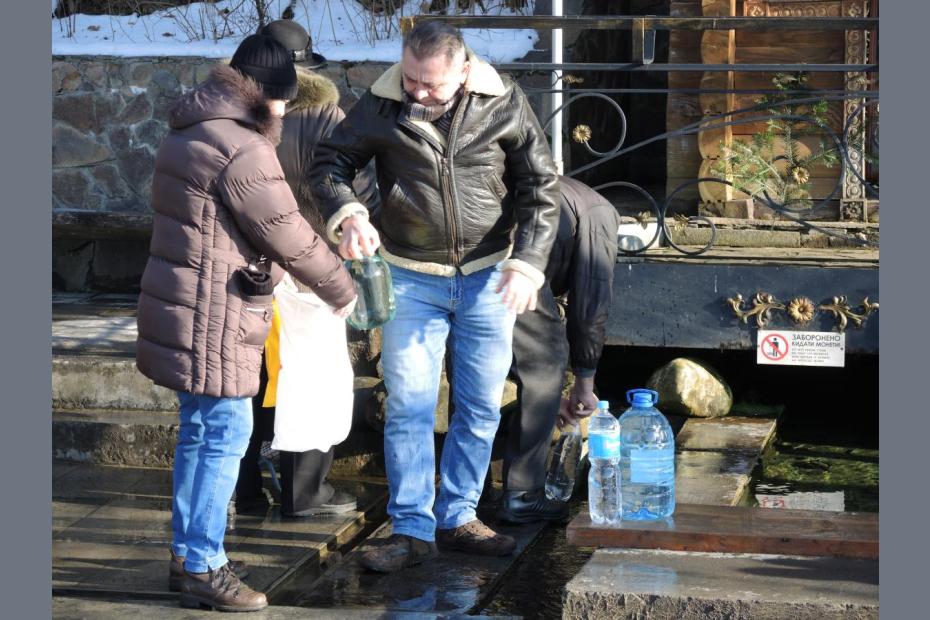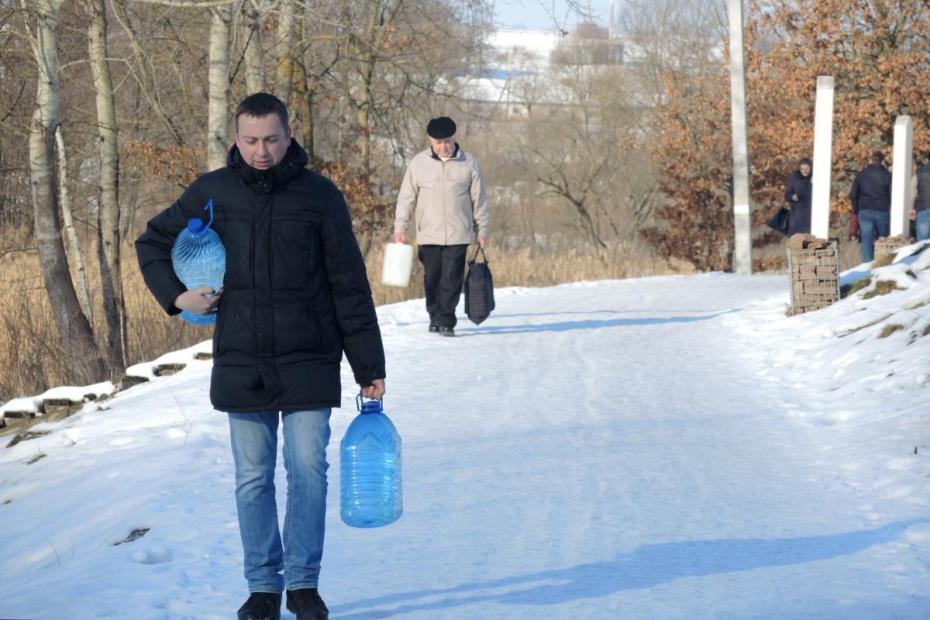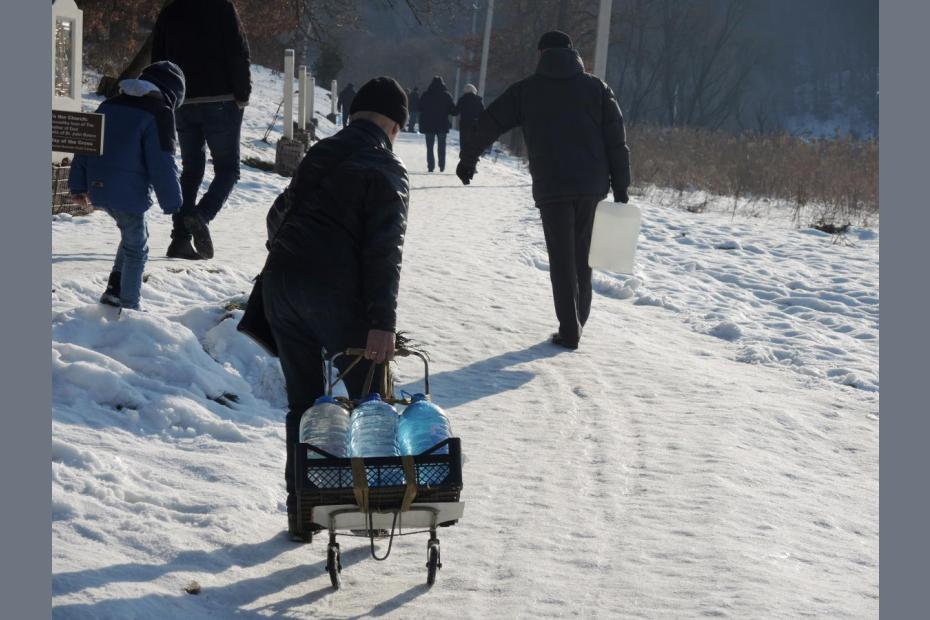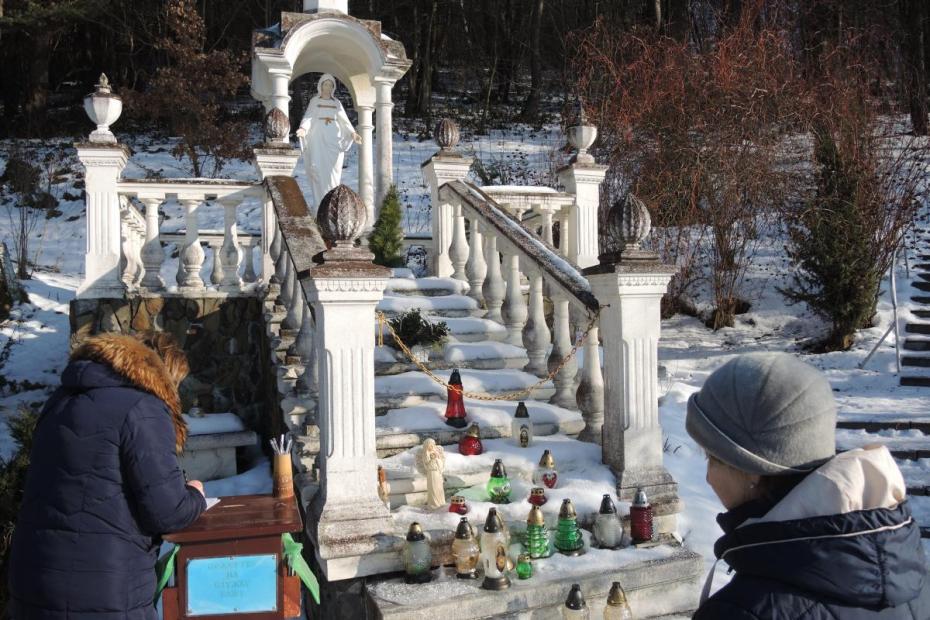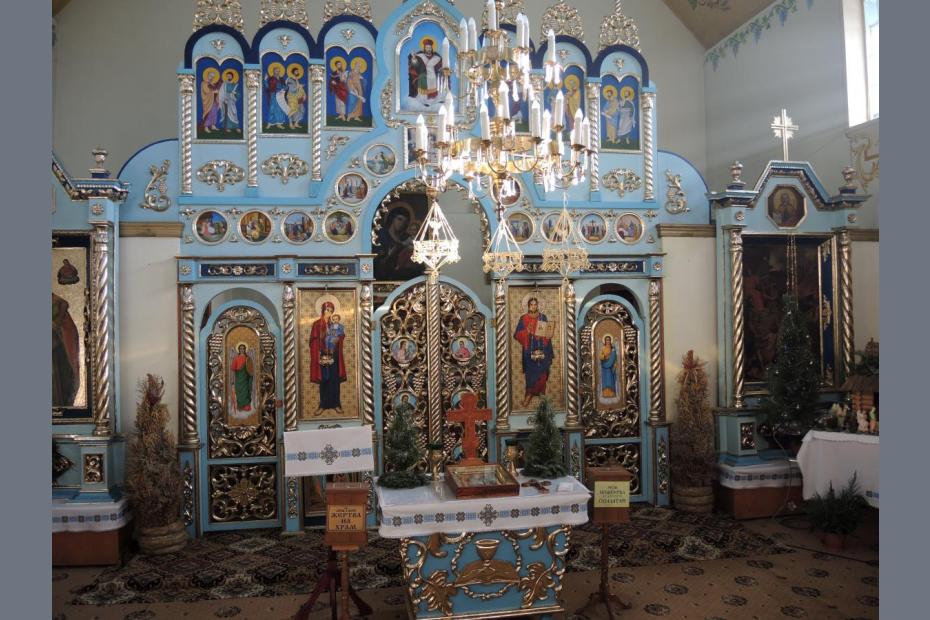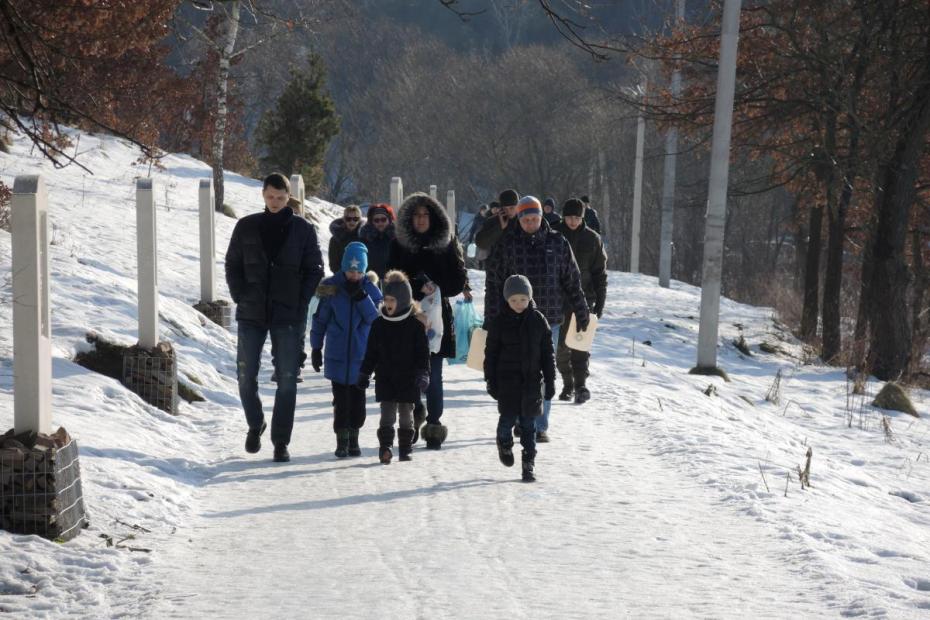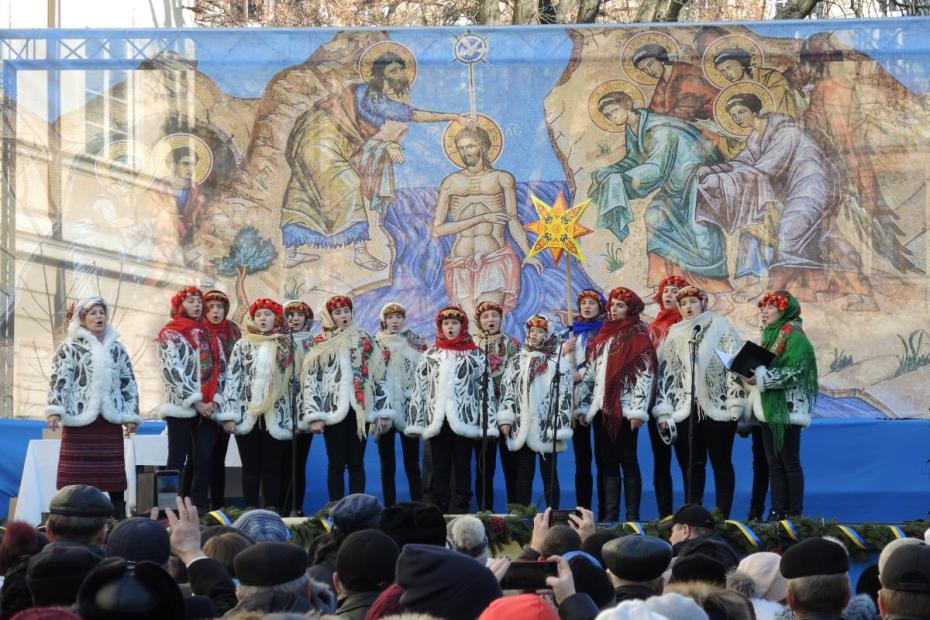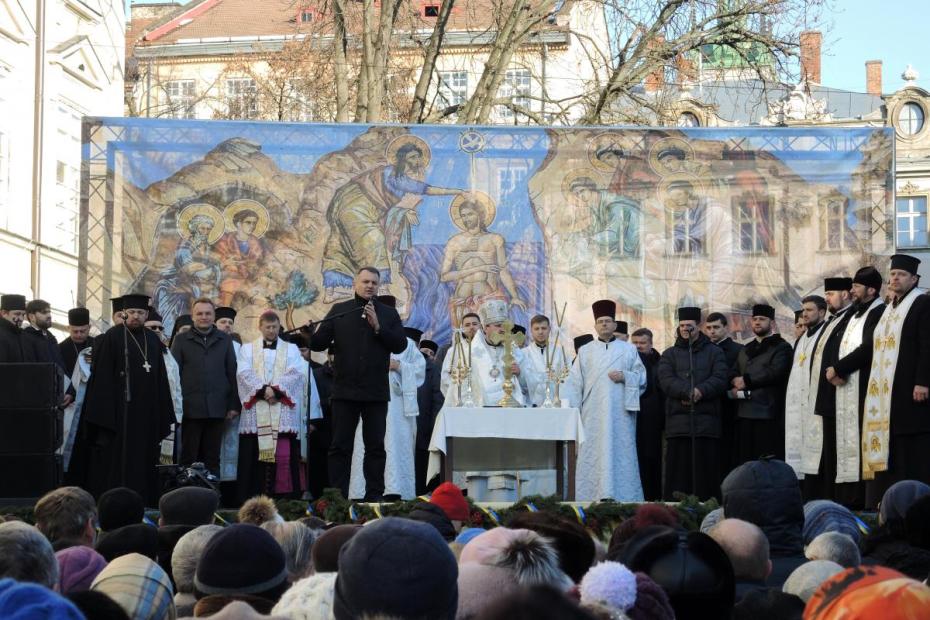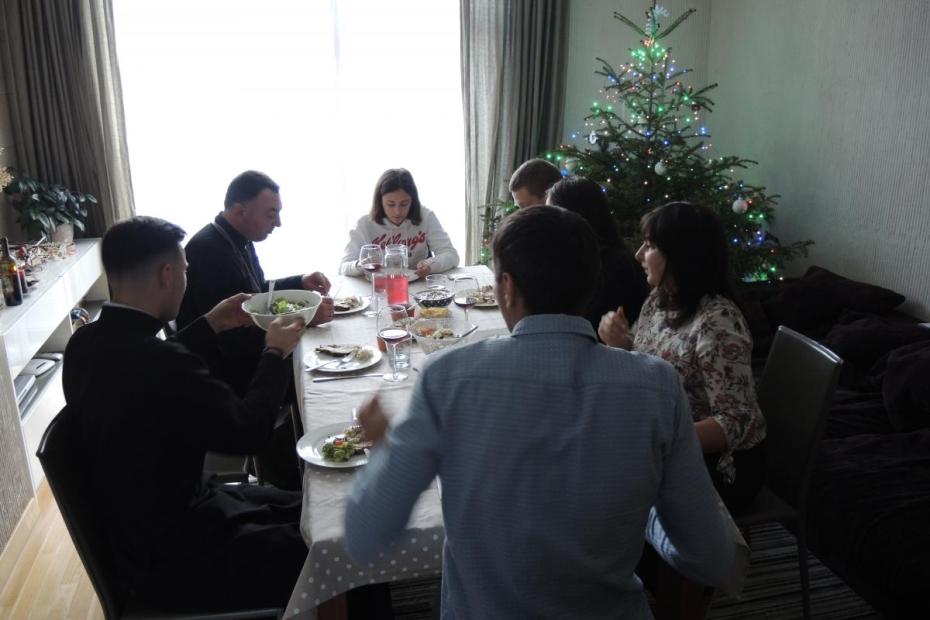Editor's note: At the time this article was written, Ukrainian Greek Catholic Churches celebrated Christmas according to the ancient Julian calendar, which the Orthodox Church uses. In the aftermath of the Russian invasion of Ukraine, almost every Ukrainian Greek Catholic parish in Ukraine, and most elsewhere in the world, adjusted their calendars to celebrate Christmas on the date of the Western calendar, December 25. In light of that, the Feast of the Theophany, or "Jordan," is now celebrated on January 6.
Twelve days after Christmas, in the midst of the short, cold days of January, Ukrainian Greek Catholics celebrate, in a second way, God coming into the world. The feast, commonly called “Jordan” but properly called the Theophany, recalls Jesus’ baptism by John in the River Jordan and the revelation of the Trinity when, as Matthew recounts it, the Spirit of God descended like a dove, and a voice from heaven said. “This is My beloved Son, in whom I am well-pleased." 1
One of the Ukrainian Greek Catholic Church’s Great Feasts, it marks the end of the Christmas season, just as the visit of the Three Kings, a different kind of epiphany, does in the West. In Ukraine, where Christmas is celebrated January 7, according to the Julian calendar, Jordan is celebrated January 19, though Jordan celebrations really begin the day before, on the eve of the feast.2 The celebration, marked by a mix of traditional liturgical and folk rituals, was almost entirely discontinued in Ukraine during Soviet times, but has enjoyed a strong comeback there beginning in the 1990s.
As befits a commemoration of a baptism, water plays an integral role in Jordan’s rituals, even in the depth of winter. The most formal of these is the liturgy known as the Great Blessing of the Waters, celebrated both on the eve of the feast and the feast day itself. At home the rituals include fasting and a special meal—including a drink of holy water—and typically a visit from the priest to bless the house with holy water. The Divine Liturgy is celebrated for Jordan, but for most people, the rituals of water and food make it special, and that by far the most people participate in. Holy water is a part of Greek Catholic life in Ukraine year round, but blessed water seems to be regarded as having special potency at the time of the Jordan feast. Many people bring it home that day from church, or a public blessing of the waters, or from a holy spring, and keep it in their home for use year round. A few brave souls even break the ice and wade or swim in the water.
The eve of Jordan is a fasting day until supper, when extended families gather for a 12-course meal, after which they sing Jordan carols (these are often Christmas tunes with Jordan lyrics) and often are visited by carolers. Despite its celebratory nature, the meal, known as Holodna Kutya, Hungry Kutya, follows the rules of abstinence by excluding meat and dairy. It features kutya, the special traditional food made of honey, wheat, walnuts and poppy seeds that gives the dinner its name, plus borsch, dumplings, breads, stewed cabbage and desserts, among other things. It begins with prayers and a toast that accompanies drinking the blessed water that believers have brought home from a parish church following the Great Blessing of Waters or from a similar blessing at a river or other local body of water.
Carols, feasts and blessings for Feast of Jordan, in Lviv, Ukraine.
In a few villages, if the cold has been severe enough, villagers cut through the thick ice a substantial opening in the shape of a Cross, and the village priests bless the water, in accordance with the Great Blessing rite, by dipping a crucifix into it three times. Some believers dip themselves three times into the icy water, confident that it will bring spiritual and physical wellbeing. Such events, whether Orthodox or Catholic, draw media attention each year, though the way most people celebrate Jordan is a bit more mundane.
A popular (and less extreme but still bracing) tradition in the countryside south of Lviv is to visit the sacred spring in the village of Novosilka. The spring, flowing from the side of a hill, has been regarded as sacred for centuries, and has a small restored shrine and shallow pool built at the source. The site is run today by the Ukrainian Greek Catholic Church in coordination with the Salesian priests. People go to the spring all year long, but Jordan is an especially popular time to visit, when the water is said to have especially curative power that day. Visitors walk to the spring quietly on a long, icy pathway, and generally stopped to pray briefly and draw holy water to bring home in multi-gallon plastic containers. Some were more daring, entering the pool barefoot on Jordan feast to walk around it in the shallow water. One folk belief is that if you circle 12 times in the small pool where the spring flows out, you will get, or keep, healthy. At any given time during the day some people could be seen doing that. Others ritually washed their faces with the cold water and blessed themselves. A few climbed the icy steps all the way up to a recently built small church, and some people stayed for a picnic, even in the winter. As devotion at the site has grown again in recent years, there is a small tourist infrastructure in the village for weekend stay-overs.
To celebrate Theophany, or Jordan, some visit a sacred spring in the village of Novosilka to collect jugs of water and walk barefoot around the shallow pool.
Parish priests attempt to visit as many homes of parishioners as possible for the feast. They bless the homes of the parishioners with holy water, pray together, and sometimes offer prayer cards and reminders about times for liturgies.
Individual parishes, both Orthodox and Greek Catholic, celebrate the liturgy and Blessing of Waters for parishioners to bring home. In the city of Lviv, historic center of the Ukrainian Greek Catholic Church, there is a larger, public ecumenical service for the Great Blessing of Waters that takes place each year in Market Square, the central square of the old city. In 2019, the Great Blessing was preceded by carols sung from the stage. The Ukrainian Orthodox Metropolitan of Lviv led the ritual, accompanied by several dozen Greek Catholic, Roman Catholic and other Christian clergy of the city. In a ritual that lasted about 30 minutes, greetings were offered, litanies were chanted, prayers were offered by the bishop, and a vessel of water on the stage and a large tank of water at the front base of the stage were incensed. Eventually the Metropolitan dipped three lit, triple candelabras into the tank of water, extinguishing the flames each time. After further prayers, including some by a Latin rite Catholic bishop, the Metropolitan dipped a metal crucifix three times into the water to bless it, stirring the waters. Following the blessing, as the clergy on the stage each drank a cup of the blessed water, the bishop sprinkled a liberal dose of water on those in the crowd within reach, and believers lined up at the base of the large tank to fill up bottles of blessed water from taps on the side of the tank.
Great Blessing of Waters, Market Square, Lviv, Ukraine.
Families celebrate later in the day with a meal that can include meat, and if the timing is right, are sometimes joined for some portion of the meal by the visiting clergy.
